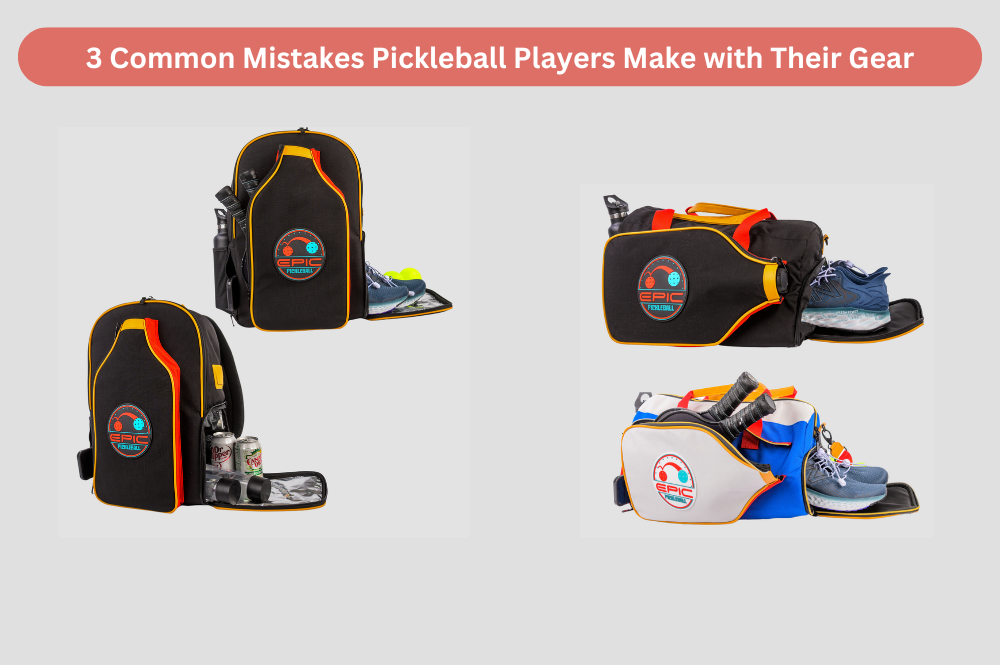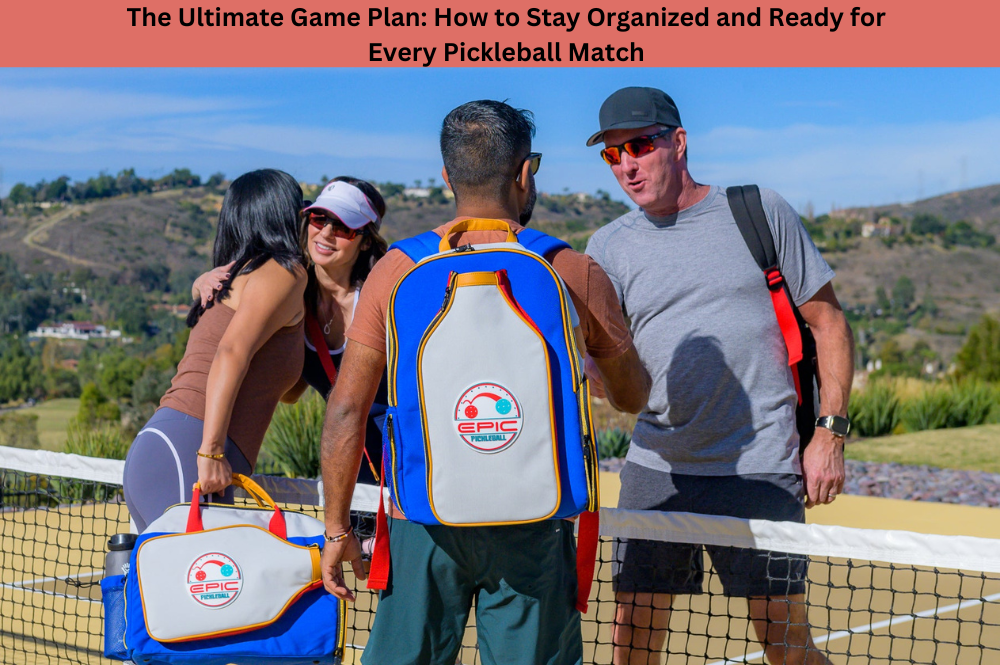Avoiding common pickleball gear mistakes can enhance your performance and save your equipment from unnecessary damage. As a pickleball player, whether you're just starting or have been playing for years, it’s easy to overlook the importance of proper care and organization for your gear. These mistakes can affect your performance on the court and even shorten the lifespan of your equipment. But don’t worry – by recognizing these mistakes and knowing how to avoid them, you can make sure your game stays strong and your gear lasts longer.
In this article, we’ll discuss three common pickleball gear mistakes players often make and how to avoid them. We'll also highlight how investing in organized pickleball bags and taking steps to protect your pickleball paddle can help you store your equipment safely and keep everything in top condition.
1. Neglecting to Protect Your Pickleball Paddle
One of the most common pickleball gear mistakes players make is neglecting to protect their paddle. A pickleball paddle is your most important piece of equipment, and improper care can lead to damage that affects your game. While paddles are designed to withstand frequent use, they are still vulnerable to things like scratches, moisture, and impacts if not properly stored.
How to Avoid It: To protect your pickleball paddle, always store it in a safe, padded compartment when you’re not using it. Pickleball bags with specialized pockets for paddles provide an excellent solution, as they prevent your paddle from coming into contact with other hard objects that could cause scratches or breakage. Look for organized pickleball bags that feature dedicated, cushioned compartments specifically designed to hold your paddle securely.
Additionally, try to avoid leaving your paddle in direct sunlight or extreme temperatures, as this can weaken the materials and impact performance. Keeping it in a bag with a protective pocket will shield it from the elements and preserve its longevity.
2. Throwing Gear into a Disorganized Bag
Another common pickleball gear mistake is tossing everything into a disorganized bag. Many players use standard bags or backpacks that aren’t designed to hold pickleball-specific gear. As a result, paddles, balls, shoes, and other accessories get crammed into one big compartment, making it difficult to find what you need quickly and risking damage to your equipment.
How to Avoid It: Investing in a best pickleball duffel bag or backpack designed with multiple compartments is a great way to stay organized. Organized pickleball bags help you keep all of your gear neatly separated and easily accessible. Look for bags with:
- Pockets for paddles: A padded, separate pocket for your paddles will prevent them from being damaged by other items in your bag.
- Ventilated shoe compartments: Many bags offer mesh or breathable sections for your shoes, which not only keeps them away from your other gear but also reduces odor.
- Space for balls, towels, and personal items: Smaller compartments for items like pickleballs, a towel, or your phone will ensure they stay in place and are easy to grab when needed.
By investing in an organized pickleball bag, you’ll be able to avoid the confusion and frustration that comes with digging through a messy bag. Not to mention, the added convenience of having your gear neatly arranged will help you stay focused and prepared for your match.
3. Overloading Your Bag with Unnecessary Items
Pickleball players sometimes make the mistake of overloading their bags with unnecessary items. While it’s tempting to bring extra equipment or personal belongings just in case, carrying too much weight can make your bag bulky and uncomfortable to carry. This can lead to back and shoulder strain and can cause the bag to tear or wear out faster.
How to Avoid It: When packing your pickleball bag, be selective about what you bring. Only pack the essentials and avoid overpacking, which can put unnecessary strain on your bag and make it harder to find what you need quickly. Consider the following tips for packing light but effectively:
- Bring the right amount of paddles: You don’t need to carry an entire collection of paddles. One or two is usually enough for most matches.
- Pack only the required number of balls: Take a few pickleballs, especially if you’re just going for a practice session. Overpacking your bag with too many balls can take up valuable space.
- Leave out unnecessary personal items: While you want to be prepared, avoid packing personal items like extra clothes, books, or gadgets that you won’t need during a match. Only bring the essentials like your phone, wallet, and keys, and keep them in a secure, small compartment.
The key is to balance being prepared and traveling light. Best pickleball duffel bags and backpacks are designed to carry the essentials comfortably, so focus on taking what you really need to avoid overloading your bag and straining yourself.
How Organized Pickleball Bags Can Help You Avoid These Mistakes
By making a few simple changes to how you pack and store your gear, you can avoid common pickleball gear mistakes and enhance your overall playing experience. Organized pickleball bags are designed to protect your equipment and help you stay efficient on the court. Investing in a bag with compartments specifically built for your paddles, shoes, and other essentials will help you stay organized, protect your equipment, and make your gear easier to access.
Here’s how the right bag can prevent mistakes and improve your game:
- Protection for Your Paddle: Many high-quality pickleball bags have a padded compartment to protect your paddle from scratches and bumps. This is especially important for players who want to preserve the quality of their paddle over time.
- Better Organization: A well-organized bag with separate compartments for balls, shoes, towels, and other accessories makes it easier to stay prepared for every match. No more scrambling through a disorganized bag looking for your paddle or extra pickleballs.
- Comfort and Durability: When you choose a bag designed for pickleball gear, you’ll have a more comfortable experience carrying your equipment. Many bags come with padded shoulder straps and ventilated back panels, ensuring that you can carry your gear without strain, even for long distances.



Hinterlasse einen Kommentar
Alle Kommentare werden vor der Veröffentlichung geprüft.
Diese Website ist durch hCaptcha geschützt und es gelten die allgemeinen Geschäftsbedingungen und Datenschutzbestimmungen von hCaptcha.